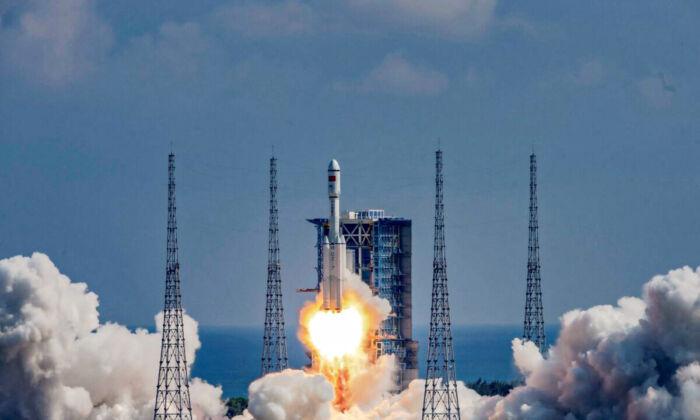China conducted its first space launch of 2022 on Jan. 17, successfully sending a
satellite into orbit on a classified mission.
Chinese state-run news agency
Xinhua first reported the launch, which it said took place at the
Taiyuan Satellite Launch Center, about 260 miles southeast of
Beijing in the province of
Shanxi.
The satellite, Shiyan-13, is the latest in China’s Shiyan series of experimental satellites, first launched in 2004. It successfully entered orbit after launch, where it will engage in an unknown mission.
According to the IAM’s website, it specializes in the development of “telecommunication, remote sensing, navigation, micro/nano satellites, and scientific satellites.”
While it is impossible to say with certainty what types of programs the Shiyan-13 will contribute to due to the classified nature of its mission, information about its rocket and other recent launches can help to contextualize the effort.
In December, for example, China launched two Shiyan-12 satellites, which were claimed to be for “space environment surveys and other related technology tests,” according to a
statement by its developer, the China Aerospace Science and Technology Corporation (CASC).
CASC is the primary state-owned contractor to the Chinese Communist Party’s (
CCP)
space program. It is also a key supplier of weapons systems to the regime, and the nation’s only manufacturer of intercontinental strategic nuclear weapons.
Unlike the Shiyan-12 satellites launched in December, the Shiyan-13 was launched with a
Long March 2D rocket.
Originally produced in 1992, the 2D variant of China’s Long March rocket family has historically been used for launching recoverable reconnaissance satellites, popular in both civilian and
military missions.
The 2D is the same type of rocket used to launch the
Beijing-3 observation satellite last June, for instance, which captured high-resolution images of a 1,470 square-mile area of the San Francisco Bay area in just 42 seconds.
To that end, the prevalence of Long March rockets in both civil and military space endeavors and the potential for satellites like Shiyan-13 to be used in support of the CCP’s various military and intelligence operations worry some.
So-called “dual use” technologies that simultaneously fulfill both civil and military missions, are a key facet of the CCP’s strategy of “
military-civil fusion,” which aims to ensure that all technological advancement in the civil arena also improves military capabilities.
As such, some defense and security experts say that the CCP’s space program is a
direct military threat to the United States. They point to projects such as a
miniature pulse-laser that Chinese scientists plan to attach to a satellite, which may be used to weaponize space as part of the CCP’s ongoing
efforts to shape space through both policy and technology.
Whatever the mission of Shiyan-13, however, it is only the beginning of a very busy year in space for the CCP, whose leadership has already planned for at least
40 space launches throughout 2022.
The regime conducted 55 space launches in 2021, the most of any nation. The United States was second with 51 launches. The rest of the world combined, meanwhile, conducted 40.





